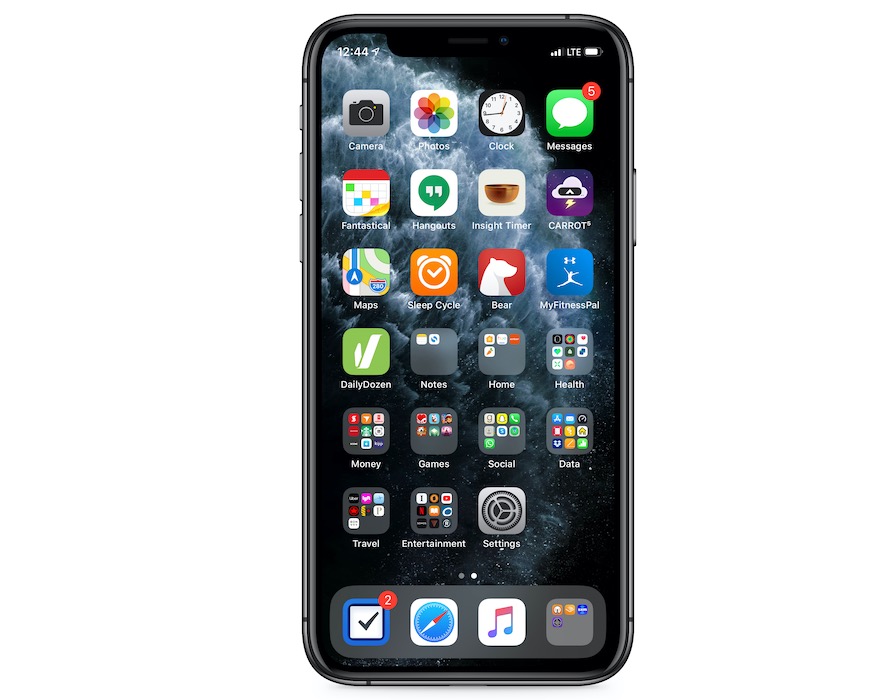How Chris Bailey Uses Technology to Live a Conscious Life
In this Mindfulness Monday post, we talk to author and speaker Chris Bailey about how he uses forced constraints to stay conscious of how he spends his time.
Meet Chris Bailey
Chris Bailey is a productivity expert, and the international bestselling author of Hyperfocus and The Productivity Project. I met Chris at a Mac Power Users live recording in Chicago, and I’ve also interviewed him for both the Focused and Bookworm podcasts.

Chris writes about productivity at alifeofproductivity.com, and speaks to organizations around the globe on how they can become more productive without hating the process.
To date, Chris has written hundreds of articles on the subject of productivity, and has garnered coverage in media as diverse as The New York Times, The Wall Street Journal, New York magazine, The Huffington Post, Harvard Business Review, GQ, TED, Fortune, Fast Company, and Lifehacker. In a recent interview, the TED Talks organization said that he “might be the most productive man you’d ever hope to meet.”
Chris is also a big Apple nerd (he was even on a recent episode of Mac Power Users) and is very intentional about how he uses his technology. I asked Chris if he’d be willing to answer a few questions about how he stays focused and productive, and he was kind enough to provide the following interview.
Must-Have, Most-Used Apps for Thinkers
We spend an inordinate amount of time sorting through hundreds of apps to find the very best. Our team here at The Sweet Setup put together a short list of our must-have, most-used apps for writing, note-taking, and thinking.
What sort of boundaries or intentional constraints (i.e. rules) have you set up around how you use your technology?
I’m very lazy, and as such I find distractions hard to resist. I’ve created some rules to structure my life around this fact. Some boundaries that I like to use are:
- I disconnect from the internet between 8pm and 8am every day. This way, I can ease out of one day and into the next one. (I typically don’t do this while traveling, however.)
- My wife and I have a weekly practice of what I call an internet sabbatical. During an internet sabbatical, we might leave our phones at home and hang out around town for either a half or full day, or just chill at home with one another. The goal is to disconnect from the internet for awhile and hang out in the analog world.
- If I’m writing or working on something aversive, I’ll almost always use a distractions blocker on my computer. I’ll also intentionally leave my phone in another room (or at home).
- I have a daily 90-minute screen time limit on my phone. This forces me to stop using it once I’ve reached my time limit for the day.
What does your phone home screen look like? How has the application of your intentional constraints shaped what shows up here?
My home screen is always changing. Here’s a current screenshot:

My internal constraints don’t really show up in the design of my home screen, but the 90-minute screen time limit is really all I need.
As you’ve changed your technology habits, what are some of the things you’ve had to learn to work around or live without?
My phone! I leave it at home around half of the time and just pair my AirPods with my Apple Watch (which is non-cellular).
This sounds more extreme than it really is. Technology trains us to feel needed. We usually aren’t as needed in our digital lives as we think we are.
What was your tipping point, the moment when you decided you needed to do something about your technology defaults?
I don’t think there was a singular “tipping point.” There was just a growing sense that I was not using my time as intelligently and as carefully as I wanted to. With every passing year, the life ahead of me shrinks and the life behind me grows. That eliminates options, which means fewer of the things I had hoped to do are now possible. I want to make the most of however much time I have left.
That said, I welcomed Screen Time on the iPhone. I knew I was abusing my iPhone, or if you like, I was allowing it to use me. I was its willing victim. Screen Time told me that the problem was far worse than even my worst case estimates had prepared me for. But the numbers don’t lie.
Once the results were in, I took immediate action. I continue to chip away at the problem of unconscious time. My life is not about what I spend my time on. It’s about how conscious I am of the time I spend.
What app (or service) has the strongest pull towards getting you to go back to the way things were? And how do you deal with it?
For me, it’s Twitter. I don’t have a Facebook account, don’t use Instagram much, and am not really on other social media platforms because I tend to waste an inordinate amount of time on them. But I keep coming back to Twitter because it provides me with a lot of stimulation and validation.
I solve this a few ways:
- My Twitter password is long and I don’t store it in Keychain, so I have to enter it manually each time. This is annoying, but is usually enough to stop me from using the website.
- I also don’t have the Twitter app on my phone or computer, so it’s harder to access.
- And when I write, I use a distractions blocker, so I don’t get tempted to check the service.
What’s your best advice for the person who is trying to change how they use their technology to be more intentional?
Really think about the ways that technology impacts your life, for better and for worse. Notice how the different apps and websites you access make you feel. Just because a website or app is stimulating doesn’t mean that it truly makes you happy. In my experience, I’ve found that usually the opposite is the case.
Must-Have, Most-Used Apps for Thinkers
We spend an inordinate amount of time sorting through hundreds of apps to find the very best. Our team here at The Sweet Setup put together a short list of our must-have, most-used apps for writing, note-taking, and thinking.
